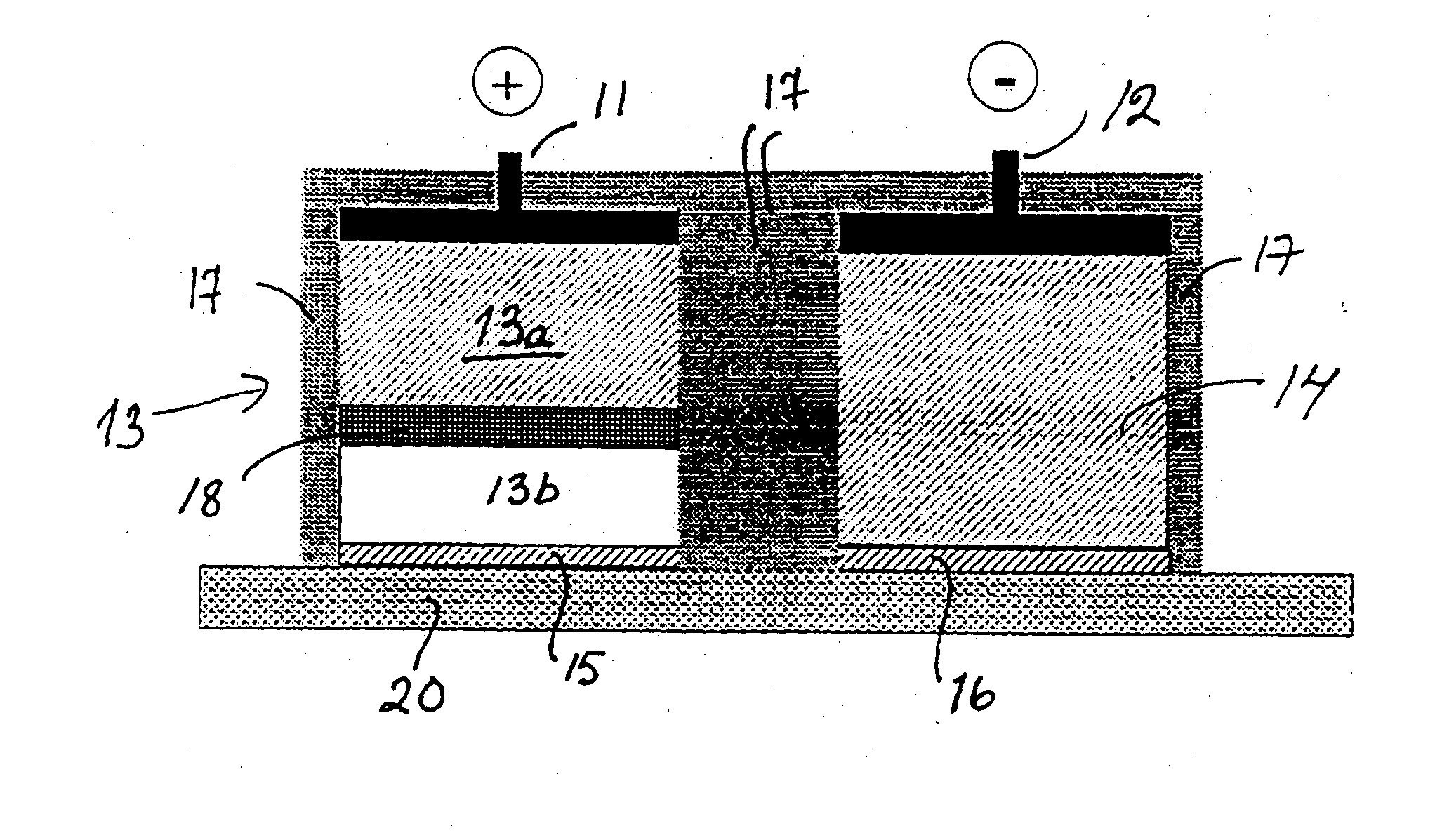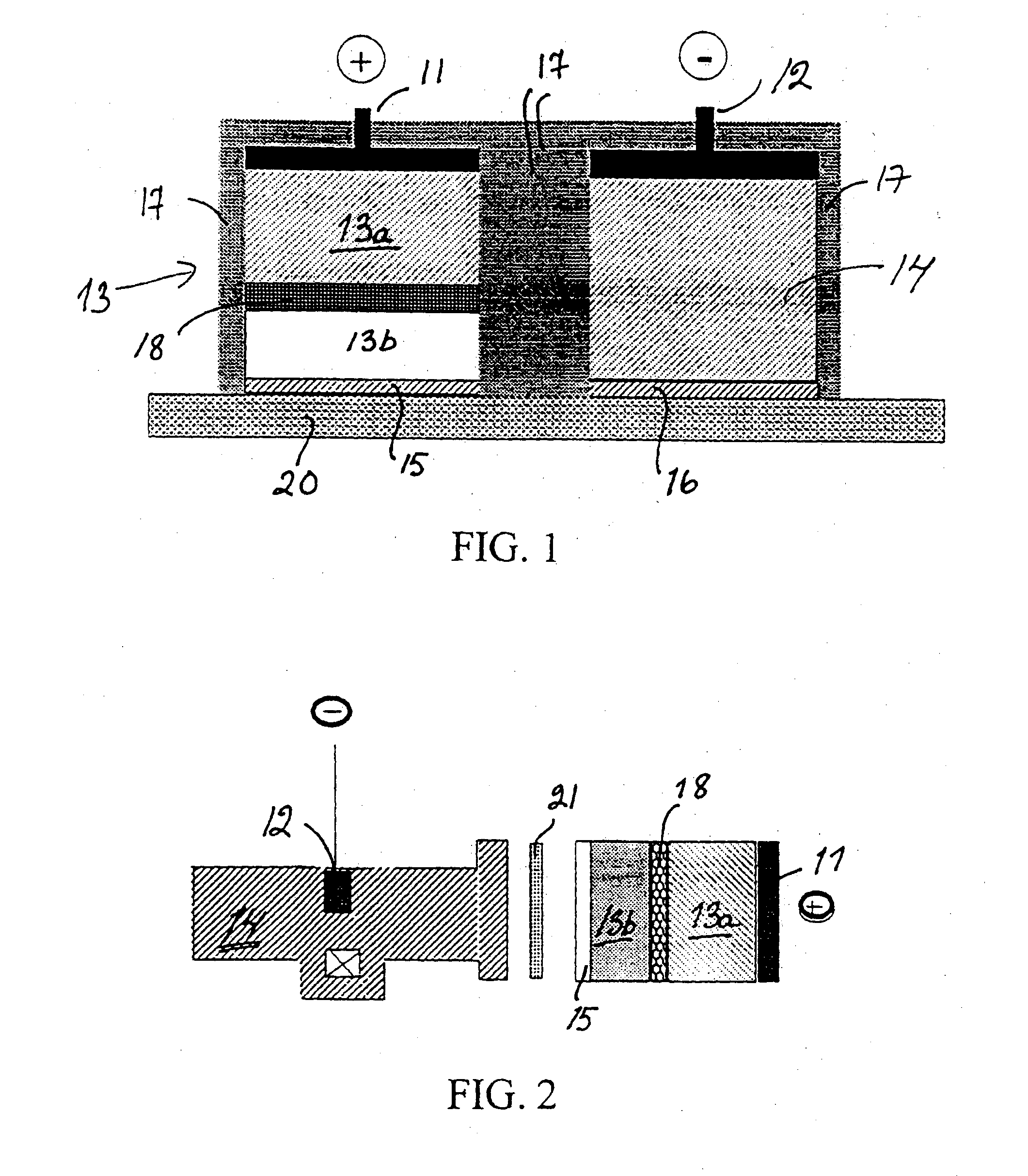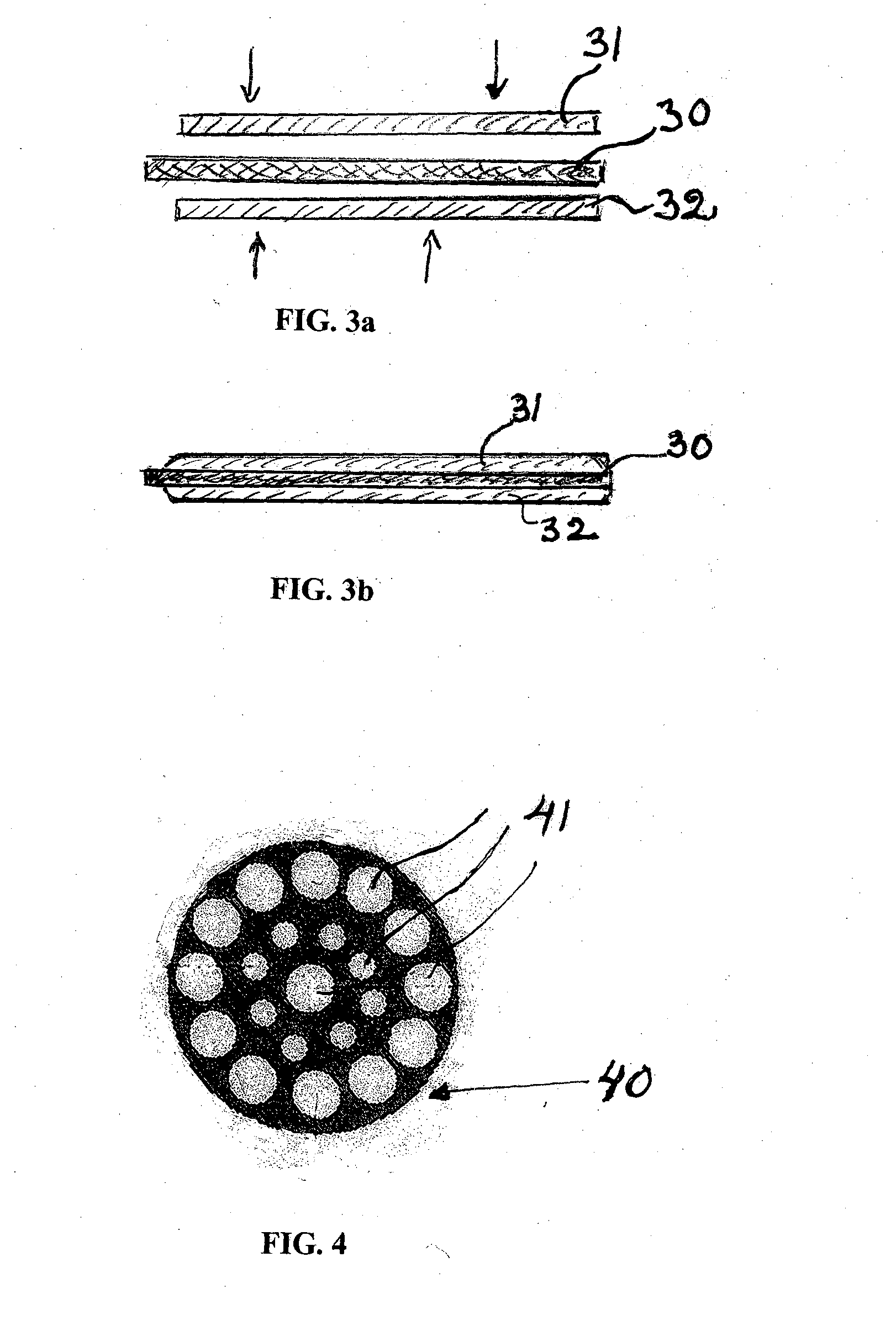Iontophoretic device for dosaging of an active ingredient
a technology of iontophoretic device and active ingredient, which is applied in the direction of medical applicators, electrotherapy, therapy, etc., can solve the problems of strict control of use, inconvenient use, and inability to achieve self-medication devices, etc., and achieve the effect of working safely for a long tim
- Summary
- Abstract
- Description
- Claims
- Application Information
AI Technical Summary
Benefits of technology
Problems solved by technology
Method used
Image
Examples
example 1
Titration Experiments
[0049]The results of the titration experiments using Smopex®-101 and Smopex®-102 are shown in FIG. 5, where the titration curves for Smopex®-101 and Smopex®-102 ion exchanging fibres are compared to a theoretical system without ion exchanging fibres.
[0050]FIG. 5 show that Smopex®-102 buffers the change of pH. On the contrary, Smopex®-101 hardly deviated from the theoretical situation without fibre. The ion exchanging fibre Smopex®-102 with weaker ion exchanging groups buffers thus the pH changes better that the stronger ion exchanging fibre Smopex®-101. The same phenomenon is also valid for anion exchangers, as for example shown by Staby et. al. J Cromatogr. A, 897 (2000), 99-111, by titration of different commercial ion exchanging resins containing different amino groups.
example 2
pH-Change at the Electrodes During the Iontophoresis
[0051]The pH changes of the iontophoresis tests were compared by using different fiber systems for the drug tacrine. The pH for the electrolyte solution (0.15 M NaCl(aq)) was 6.10 without fibre. When the electrode space and the drug space comprised Smopex®-101 fibre, the pH was 6.80 before the iontophoresis. When Smopex®-102 fibre was used, the pH was 7.80. At the end of the iontophoresis run, the pH value was measured in the electrode space, the drug space and the acceptor space for about 24 h after the iontophoresis. Because H+-ions are released at the anode in the iontophoretic system, it is important to obtain information on how the pH in the drug space can be raised to the physiologically acceptable level (pH 3-8). The pH-values measured are shown in table 2.
TABLE 2pH-value in the electrode space, the drug space and the acceptor space atthe end of a 24 hour's iontophoretic run. The drug space and the acceptor space wereseparat...
example 3
Iontophoresis Tests Through a Neutral Membrane
[0053]The fibres Smopex®-101 and Smopex®-102 were investigated as suitable for ion exchanging fibres in the iontophoretic device. First, the Smopex®-101 fibre was investigated. Ion exchanging fibre loaded with tacrine was added to the drug space which was closed by a UC 010T ultrafiltration membrane. The iontophoresis was started and the potential was measured as function of time. A typical potential curve is shown in FIG. 6 for the current densities 0.2 mA cm−2 and 0.5 mA cm−2. FIG. 6 shows the potential difference U as function of time during a 24 hour's iontophoretic test (in the cell: the synthetic membrane UC 010T and tacrine loaded onto Smopex®-101 ion exchanging fibre).
[0054]During the test a HPLC-sample was taken from the acceptor space at regular intervals for determining the tacrine flow. The amount of tacrine in the acceptor space as function of time at the current densities 0.2 and 0.5 mA cm−2 is shown in FIG. 7, where one ca...
PUM
 Login to View More
Login to View More Abstract
Description
Claims
Application Information
 Login to View More
Login to View More - R&D
- Intellectual Property
- Life Sciences
- Materials
- Tech Scout
- Unparalleled Data Quality
- Higher Quality Content
- 60% Fewer Hallucinations
Browse by: Latest US Patents, China's latest patents, Technical Efficacy Thesaurus, Application Domain, Technology Topic, Popular Technical Reports.
© 2025 PatSnap. All rights reserved.Legal|Privacy policy|Modern Slavery Act Transparency Statement|Sitemap|About US| Contact US: help@patsnap.com



